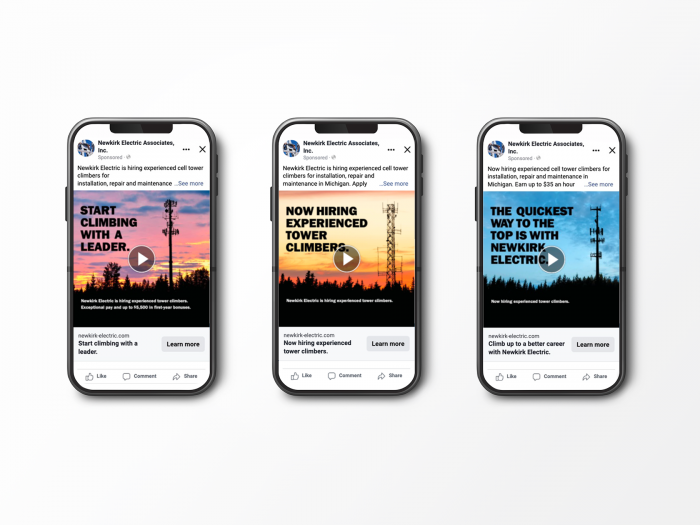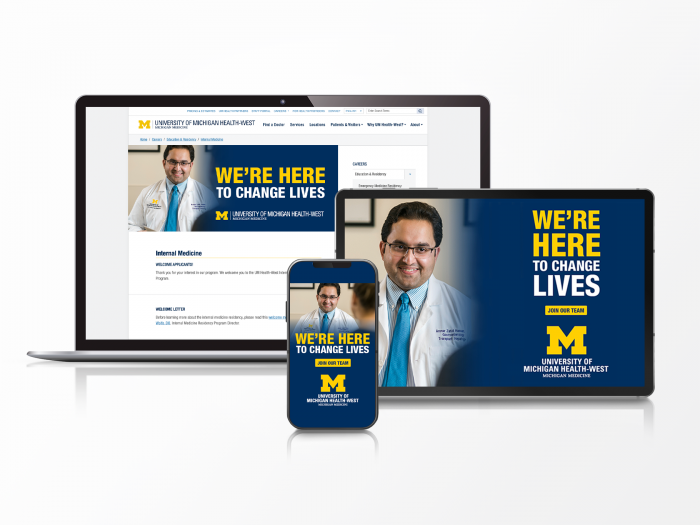Some problems have simple explanations. But U.S. companies are staring down a hiring quandary with so many variables that merely defining the problem takes labyrinthine analysis. Business Insider recently offered an explanation, boiling it down to just 13 interwoven factors. Oh, is that all?
Wages. Flexibility. Childcare. Health concerns. Burnout. Early retirements. Skills mismatches. Biases in hiring. These all are among sticking points as U.S. companies try to fill more than 11 million job vacancies, with a mix unique to each candidate. It’s frustratingly unfair.

So, how does your company do its best to hire?
Enter the multi-pronged, omnichannel recruitment campaign—a strongly emerging, powerful supplement to standard hiring practices for all levels of employment.
“We look at it as building your employer brand. Prospective employees may not have heard of you and, if they have, they may not know what makes you a better employer than their last employer. So, we’re starting with baby steps and building the perception of why they should work for your company.”
Ann Hansen, media campaign strategist for ddm.
Lately, Hansen has seen longtime clients supplement their marketing campaigns with recruitment campaigns to take on the challenging hiring environment. Though relationship building has a longer runway than standard job posting notifications, the proliferation of such campaigns suggests the longer game is paying off.

Here are five guideposts to building and following a strong recruitment media campaign to get your organization’s hiring on track:
1. Use multiple touchpoints that make sense.
Like any marketing campaign, you have a target audience. Do your homework on being where your audience is—even if they’re not actively seeking a new job. It could make sense to use display ads, social ads, and off-screen options such as billboards and newspapers to build the top of your big funnel. The first step is letting your audience know you’re there and you offer a great place to work.
Don’t forget that your messaging here will dovetail with your brand building. If your company is innovative and caring enough to do business with, of course people would want to work there!
2. Tell your story—or let an employee do it for you.
A simple “Now hiring” sign is compelling to some, but not many, and it may be too general a tone for your positions anyhow. Right now, even the topmost vote-getters in the multiple “Best Places to Work” lists are having trouble landing key talent.
Make a strong case. Integrate employee testimonials into your company’s marketing content and social media channels. Even consider a native advertisement, which can make a more in-depth assertion that your organization is great—and great to work for. Use the passion of your company’s biggest internal fans to attract like-minded prospects.
3. Follow up.
Retargeting the people at the top of your funnel is getting trickier in the digital sphere. But you can and still should do it. Your perfect-fit employee might have spent five minutes on your website considering a job posting, thinking she’d come back to it later. That scenario screams out for a nudge—so use a retargeting campaign to keep the conversation going.
Do you offer state-of-the-art facilities? Have a fitness program? Offer a healthy work-life balance? Retargeting ads with a simple taste of your company’s attractive qualities might be the gentle nudge needed at this point in the journey.
4. Be responsive and personal.
The best marketing campaigns can be spoiled by poor follow-through. Don’t let it happen to your recruitment campaign. We expect a speedy and personal reply from an interviewee, but now the same is expected from the employer.
When your prospect reaches out via webform or social media, a warm and fast response could win the day. Even if it’s just a light phone conversation with a screener, your marketing could pay off the moment your potential new team member hears a friendly voice from your organization. Add to the personal touch by making a few extra clicks on candidates’ LinkedIn profiles, learning about their past employers, colleges, or causes. If you would do it for a customer, consider it for a potential team member.
5. Finish strong with help from the top.
When you have a potential big deal or partnership to forge, it’s unlikely to happen without your uppermost executives in the room to help close the sale.
Hiring a person is a big deal. Even for a job that pays $10 per hour, an employee at your company will equate to a $100,000 investment within five years—not even counting the extra for taxes and benefits.
Having your CEO involved in interviewing (and not merely as a formality) can attract talent, expedite the process, and even start the employer-employee relationship on the most solid footing. Who better to convey the company’s mission and values?
The details of your recruitment media campaign and how your organization follows up on it will take some introspection and time. Get the help you need from all levels of your organization, and even from outside of it.
A good campaign will tell all your stakeholders that you want the best working for you. And when you build it right, you will introduce team members who are more deeply invested in a relationship with your organization from the moment they say, “I accept.”
